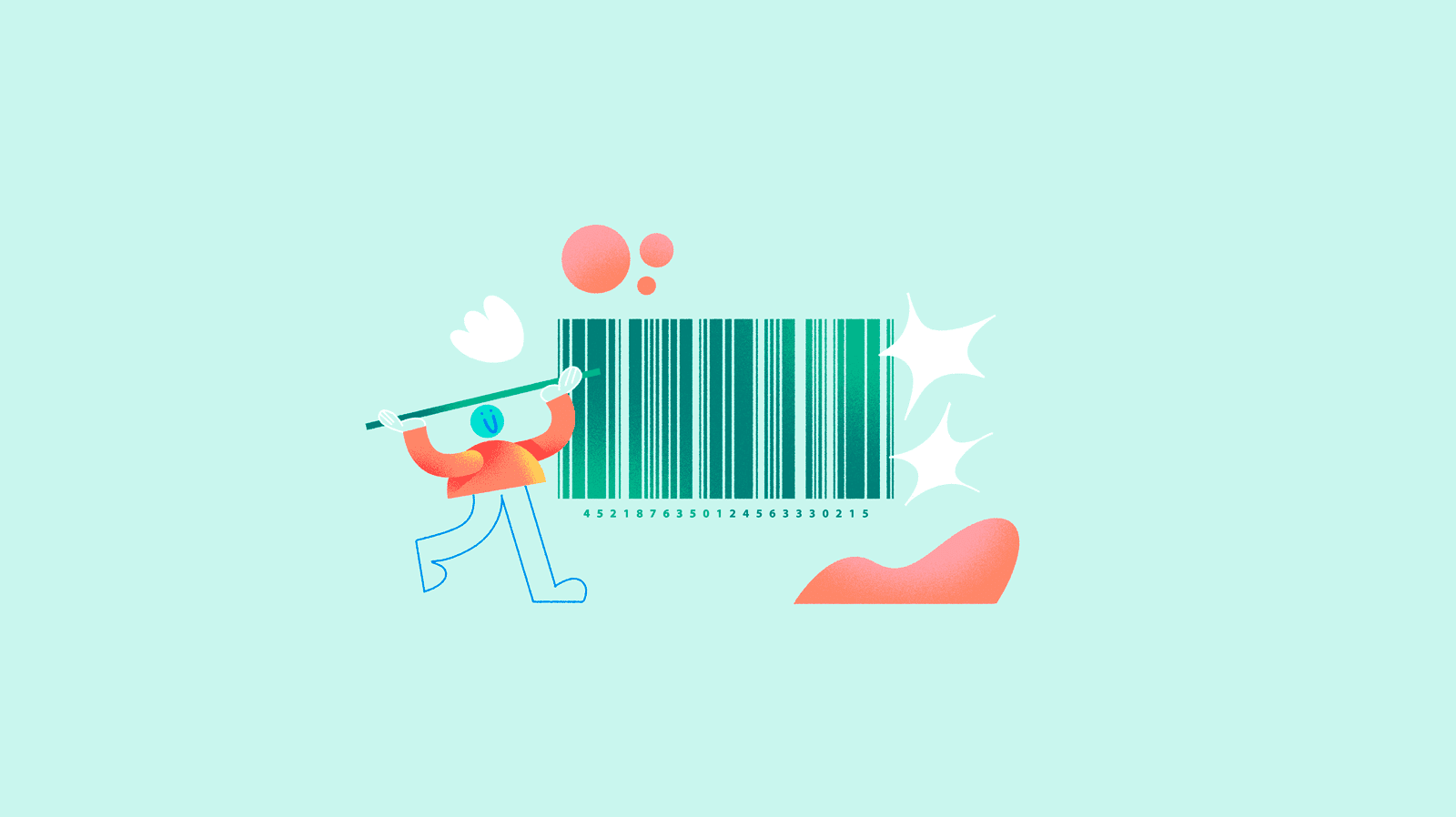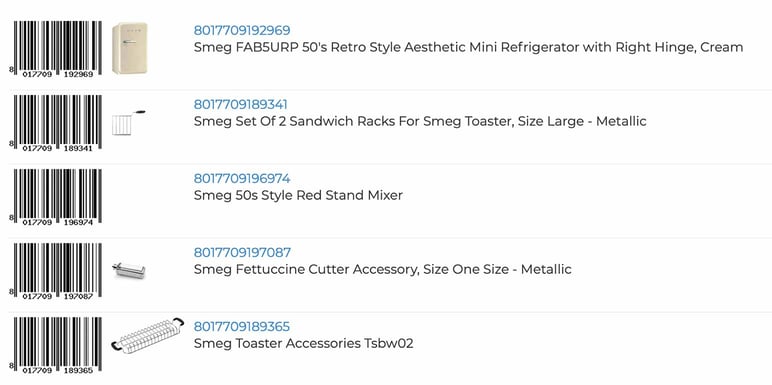
What is product coding?
Product coding consists of associating a code made up of digits, letters or both to each product, in a differentiated and customised way.
These codes are used both to identify products at an international level and to easily locate catalogue and warehouse products, and to mark characteristics of the product itself (such as variant, category, product group, etc.).
Associating a code to each product is usually done in an automated way by means of systems prepared for this purpose. Doing it by hand would involve both errors of repetition and coding logic and a lot of time spent on creating each code one by one.
Especially when it comes to catalogues and warehouses that may contain thousands of different products.

Why it is important to have a product coding system
When the use of a product code is understood, its usefulness is obvious for any participant in a supply chain, whether it is a manufacturer, distributor, retailer or brand with a direct sales model.
Product codes enable the daily tracking and maintenance of a company's or shop's inventory and catalogue, for both offline and online channels.
They are key pieces of information both to know what products are available in the catalogue offer and to track their stock levels in warehouses and sales channels. Without these codes, it would be much more common to lose track of products.
In addition, a product coding system also serves as a basis for analysing inventory performance, as codes make it easier to see which products are selling the most and the least, how much stock is on the shelves and for how long it’s been there.
In online shops they are also useful, as you also need to identify products in your own inventory or when ordering from a distributor or brand, with no errors and ensuring orders are correct.
Another issue is whether it is necessary to include the product code in the product data sheet of your online shop. The more content a product page has, the better it is both for online search engines such as Google and for your customers. Some of them may need the code or could use it as a reference, especially in more professional or industrial sectors.

The benefits of coding products for online shops and warehouses
- They offer a simple organisational system: Identifying each product with a code increases traceability through systems and apps, and exchanges information between people and departments.
- They save management time: It is much faster to generate automatic codes for each product. Thanks to them, customer service and logistics departments can also locate them more quickly, and add new products and shipments in less time, with no need for tedious manual records.
- Inventory optimisation support: By enabling a more accurate analysis of how many products you have and what their movements have been in real time, it is easier to determine what sells best and allows you to make better business decisions.
- They facilitate business intelligence: As we have already mentioned, product coding offers greater control over how many products you have in your catalogue, warehouses and different channels, and what their performance is in each one of them and in terms of profitability for your company.
- They reduce the risk of logistical errors: The codes make product identifications more precise and, therefore, prevent misplacements in the warehouse, or misunderstandings when sending orders to customers of an online shop, or when generating stock renewal requests to your wholesalers, distributors or manufacturers.
How to implement your product coding system
There are some universal value codes used by all manufacturers, but in reality the product coding system depends on the type of product, and you can also generate your own custom codes.
In all cases, a product code must meet some basic needs:
- Be unique for each product.
- Be easy to write and share (through a logic that must be respected by all codes, whether in an international system or internal to your company).
- Associate identifying features (such as category or variant) to the product.
- Include a control code.
To generate them, there are systems that automatically create codes for each product and new addition to your catalogue, such as an ERP or a WMS.
When it comes to managing them, as well as the rest of the product information, it is best to use a PIM management system in the cloud. This platform allows you to gather all your product data, including identification codes, and to locate, share and edit it in real time, from any device, anywhere.
A PIM system integrates with as many devices as you want and allows you to keep track of all your products and which channels they are in, including online shops and physical retail outlets.
Types of product coding for catalogues and shops
As mentioned above, there are several types of product codes that can include different elements:
- Numeric coding: codes that only include numbers.
- Alphabetic coding: codes that only include letters of the Latin alphabet.
- Alphanumeric coding: codes that combine numbers, letters and signs.
Now, within these three categories there are examples of common codes that you will recognise immediately.
One of them is the barcode or EAN / EAN13. It is made up of thirteen numeric digits that identify the country of origin, manufacturer, product code and control number of each product. It is also known as GTIN or GTIN13 (Global Trade Identifier).

It is a mandatory identifier and is also useful for identifying goods in warehouses and physical shops using a laser scanner. Furthermore, it may also be necessary in an online shop that has its own warehouse and has to keep track of incoming and outgoing goods.
Another similar coding system that is currently in vogue is QR codes, which can be useful to use in virtual resources, such as social media posts, emails or digital catalogues, to take your customers to a specific product page in your online shop.
RFID tags are also increasingly used to identify products, but are useful in warehouses and physical shops, as they are stickers that are attached to each product.
Two other common types of product coding for online shops are:
- The UPC code: another universal identifier, consisting of 12 numeric characters, which represents a product anywhere in the world.
- The SKU code: this is an alphanumeric identifier that a shop generates in a customised way for its products and for internal tracking. In Spain it is also known as Warehouse Reference.
In short, depending on the countries or regions in which you sell your products, you will need to use different types of codes to comply with current regulations. And some of these identifiers are mandatory (such as the EAN or UPC), while other product coders can be created according to your own internal logic, to control products within your company (such as the SKU).
If it seems complicated to manage so many types of product coding, and even more so if you have thousands of them... yes, it is.
To avoid errors when locating products and to keep inventory updated in real time across all channels, you need a PIM system that centralises all this information.
Try it for free with Sales Layer: we have different packs available depending on your volume of products and SKUs.




.png?width=520&name=Blog%20Partner%20(3).png)

.png?width=520&name=Blog%20Partner%20(1).png)


